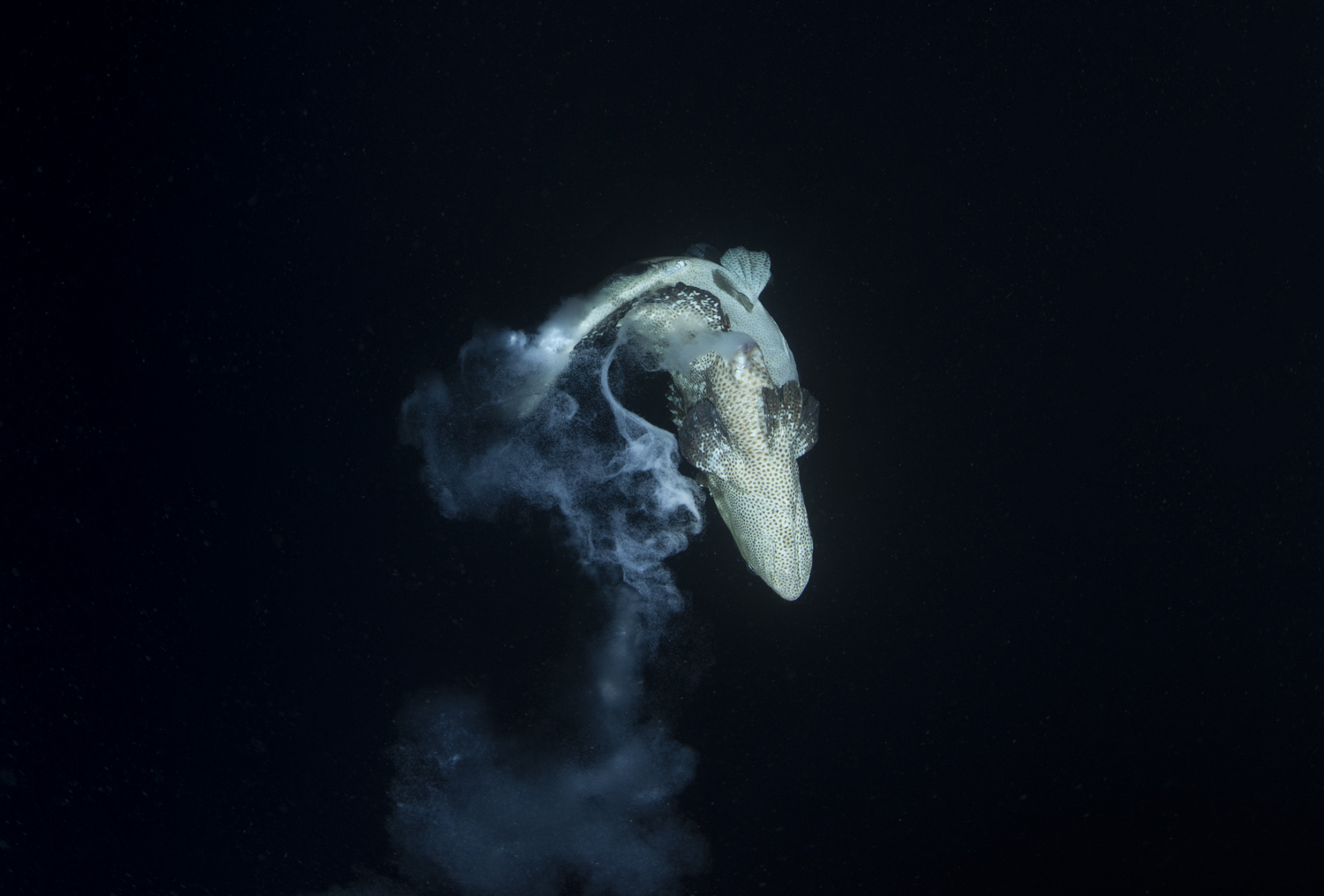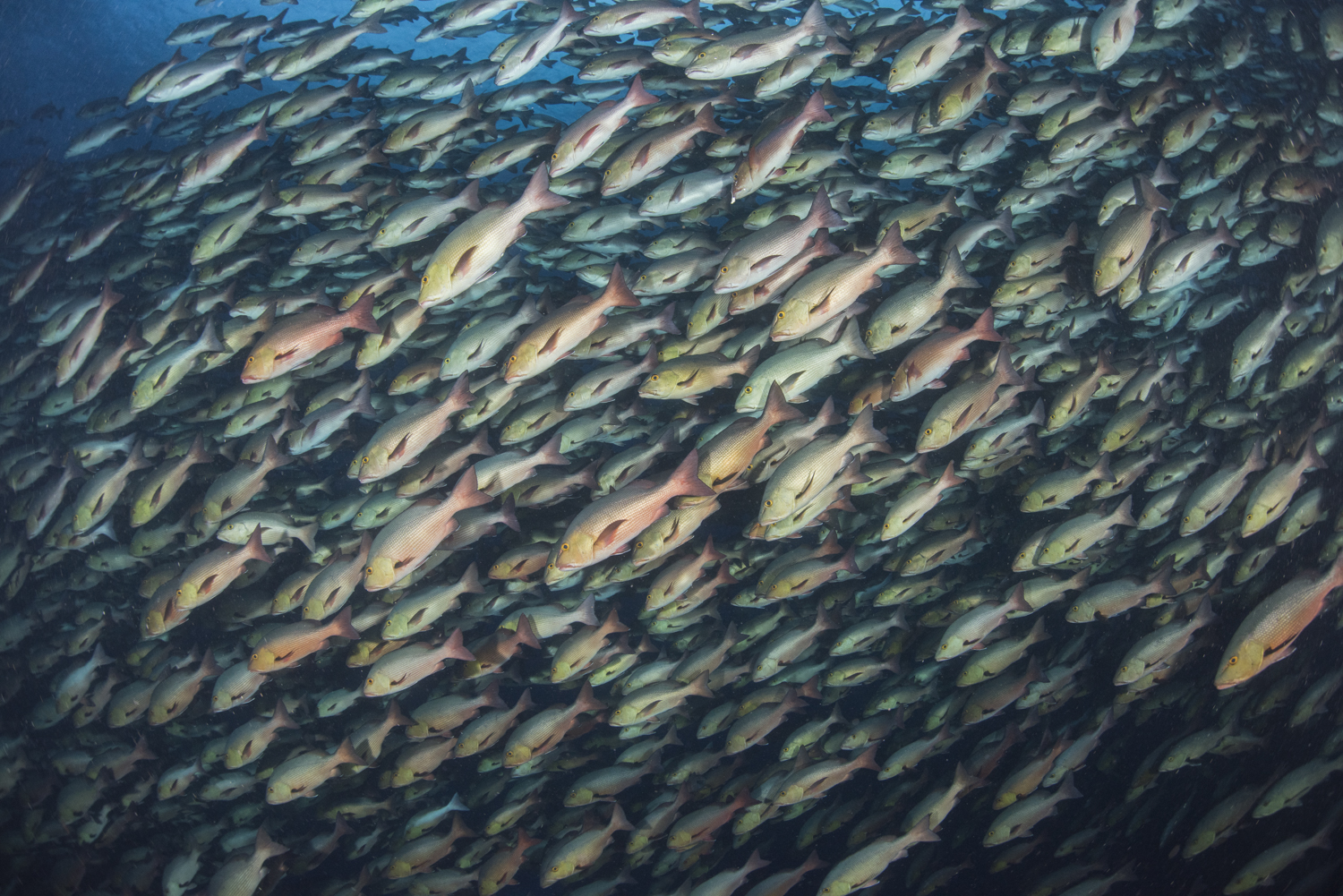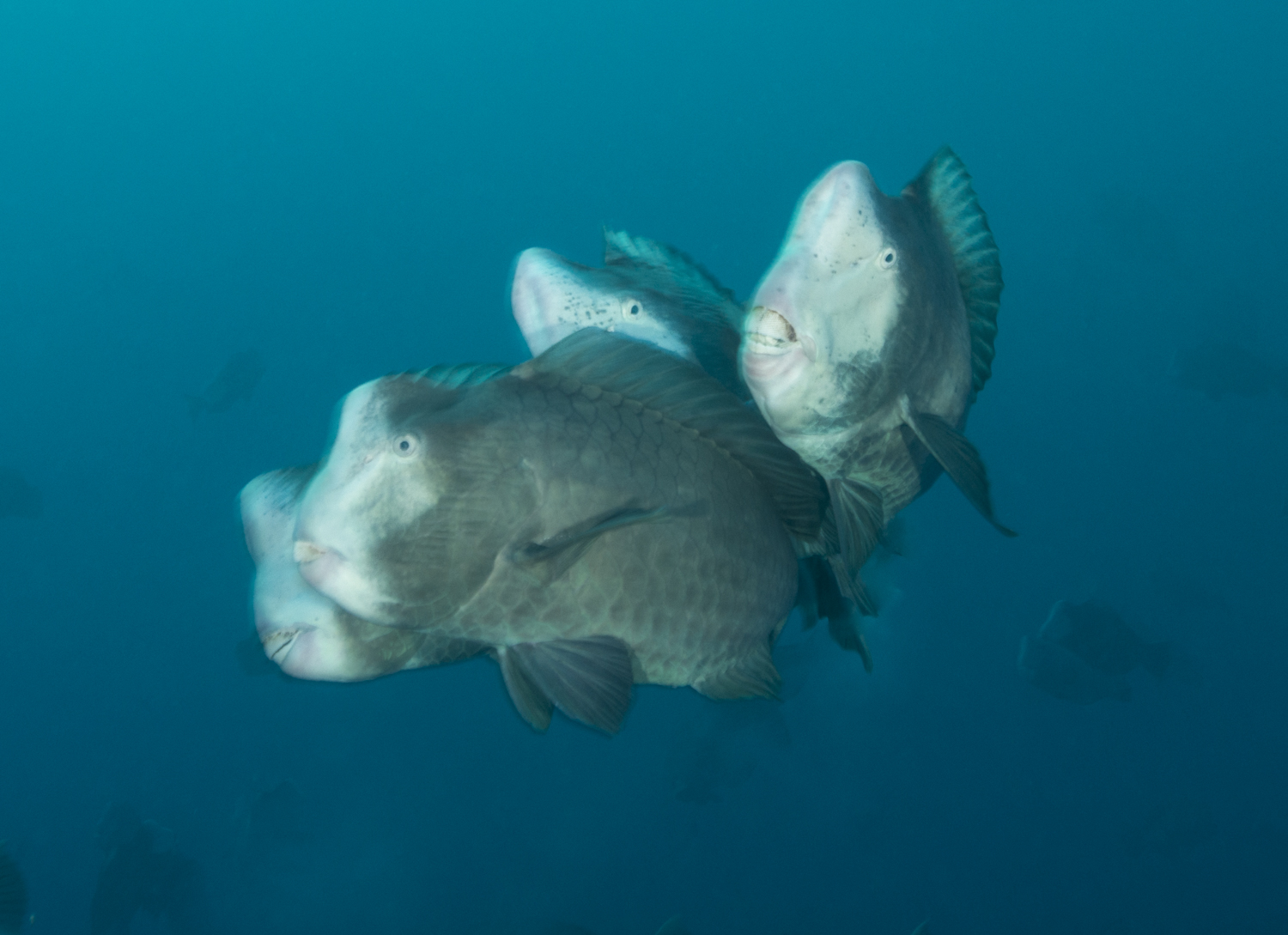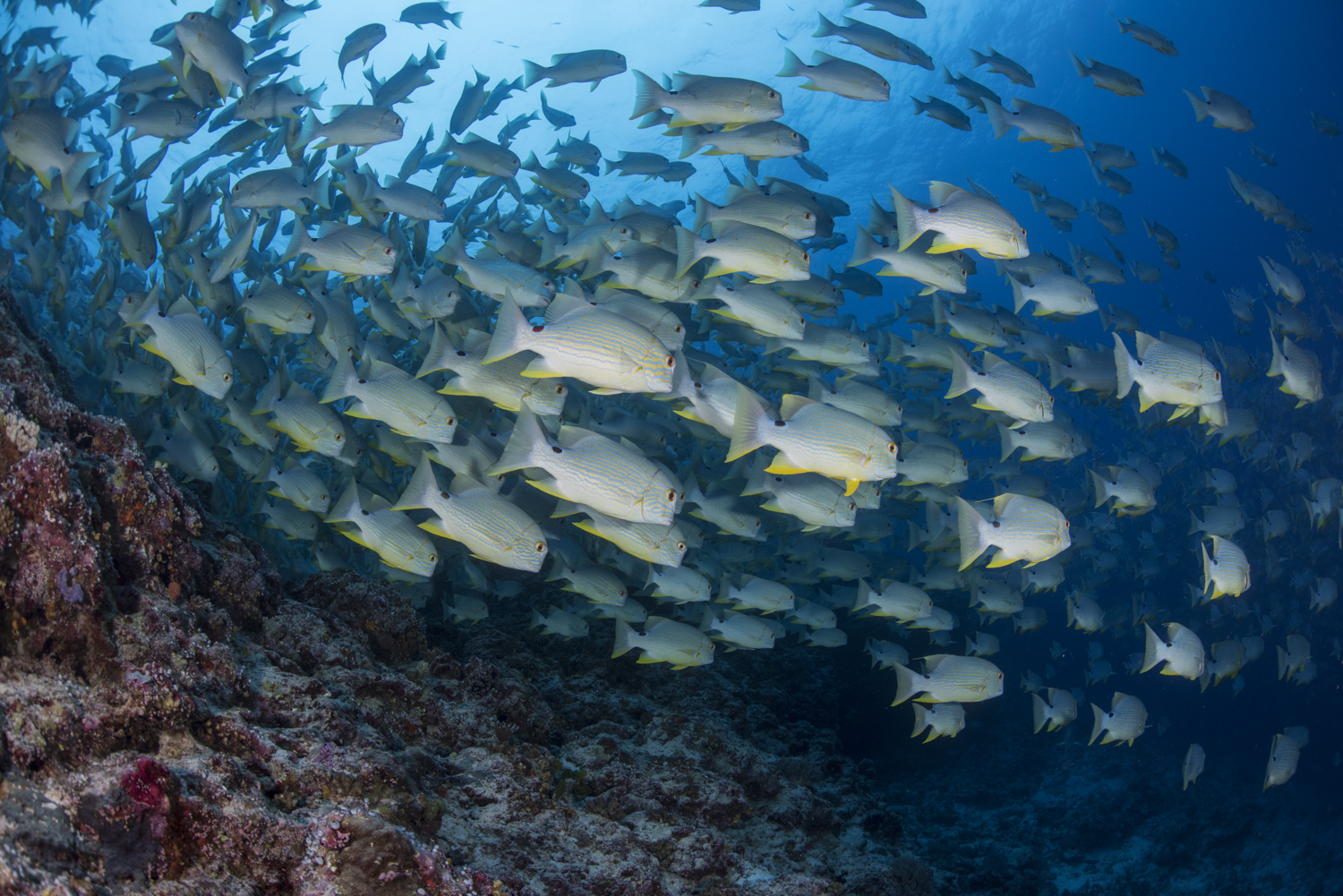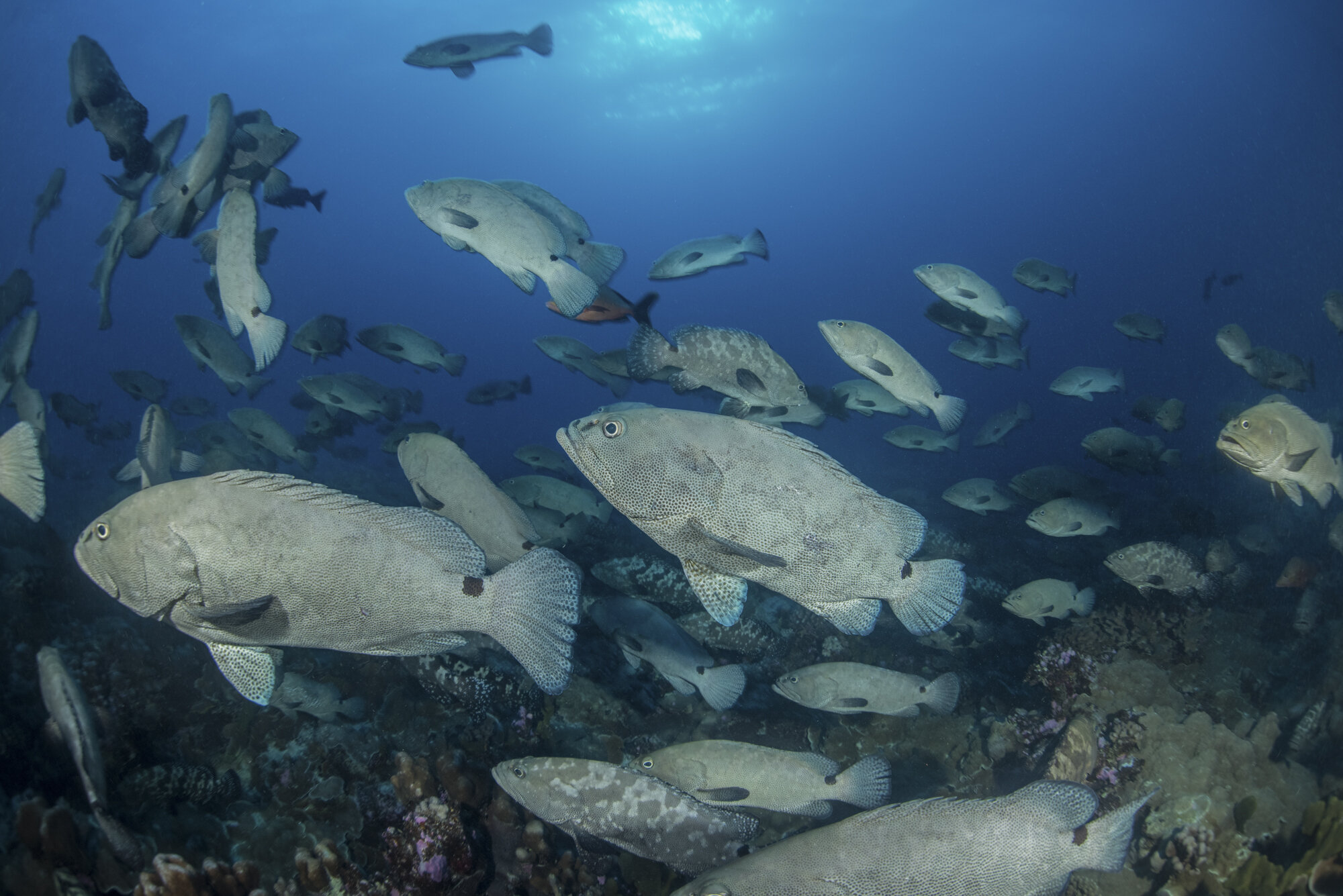WHAT ARE SPAWNING AGGREGATIONS ?
A fish spawning aggregation is a predictable gathering of a single species of fish that has gathered together in greater densities than normal with the specific purpose of reproducing.
Typically such aggregations form at the same place at approximately the same times each year. There are two classes of spawning aggregation, "Resident" and "Transient". Both occur at predictable and regular sites and times.
Resident aggregations are formed by fish that only travel short distances to the aggregation sites, and assemble on a regular basis, sometimes almost daily and for extended periods. Such species are generally small in size.
Transient aggregations are formed by larger species physically able to travel greater distances. Transient aggregations usually form for just a few months each year, often for a week or two at a time. As a general rule, transient aggregations are larger, of shorter duration and less common than resident aggregations.
UNDERSTANDING THE FORMULAS
It has been said that we know more about the moon than we know about our own oceans, but just how connected are the two. We all know that the moon and sun controls our tides, but we are only just starting to understand how the moon controls fish aggregations and spawning events. Its no new fact that the fish follow the moon phases, fishermen have been timing this for centuries.
When I first started tour guiding and filming underwater in Palau I would see something unusual and most of the time I though that it was just pure luck what we saw. It wasn't until I started to keep diaries of what and when I saw it recording down location, tide, time and moon phase. Over the years my diary grew and things started to pop out. I would see different fish species schooling the same time each year or even every month. What exactly was happening, why are these schools so predictable ?
Something I was later to find out, these were spawning aggregations. And so it began the learning discovery of finding the formulas. A combination of tide, moon, light and exact location to witness some of natures secrets....Spawning Dives !
In Palau only a few dedicated dive shops so far have the knowledge of lunar cycles and tidal times to be able to practically guarantee such spawning events. Unique Dive Expeditions offers educational expeditions targeting spawning aggregations around lunar phases, a new kind of style of diving. After spending the last eight years studying these aggregations there are so far four regular spawning dives achievable, other aggregations are being studied as we speak.
Each species of fish has its own spawning patterns and styles and follows its own spawning lunar phases. Some aggregations will spawn every month like the Twin spot snapper (Lutjanus bohar) and the Bumphead parrotfish (Bolbometepon muricatum). Other aggregations will only spawn once or twice each year like the Blue lined sea bream (Symphorichthys spilurus) and then theres the Camouflage grouper pioneered by the Unique Dive Expeditions team which happens only twice a year at night.
PALAU
THE TWIN SPOT SNAPPER - (Lutjanus Bohar)
FULL MOON
Found in Peleliu and on other outer promontories in Palau, these fish aggregate around full moon. Schooling in mid water in the day, this impressive school looks like a dark cloud as you approach it. Between 5000 and 10,000 fish depending on the month can be seen schooling and spawning here.Just as the sun rises you enter one of Palau’s notoriously strong current dive sites.
The reef is barely visible as the dark cloud of snappers appears in the distance. Waiting on the reef for the exact moment you watch as bullsharks (Carcharhinus leucas) and blacktip sharks (Carcharhinus limbatas) parade around its outskirts.Suddenly the spawning erupts, all hell breaks loose as multiple females shoot to the surface, with males on the chase releasing their milky gametes into the water column as what seems to be aggressive reproduction.
Visibility goes from 30m to 3m near the surface and hungry black snappers are crazily feeding on the newly born youngsters. Drifting in the blue water doing your safety stop with the lucky snapper survivors you realize you just witnessed one of natures magic moments.
THE BUMPHEAD PARROTFISH - (Bolbometepon muricatum)
NEW MOON
Hidden on the West side of Palau lies a sandy slope perfect for the continuation of one of the oceans friendliest green giants.Scientists and divers knew little about there reproductive behavior until Blue Marlin divers found the ground breaking site. This is the biggest bumphead aggregation so far discovered on the planet. Most divers would be lucky to have witnessed a school of a hundred feeding around the reef, here you can see more than a thousand displaying color changes, males banging heads and a thousand fish spawning, truly a magical site.
Early in the morning the school starts to form on the shallow reef top. One by one following each other from the shallows out onto the reef top like a waterfall, the aggregation begins to form. Hundreds turn into a thousand and the reef starts buzzing ready for a show.As a function of light and tide start to collide so do the bumpheads. Each green fish now starts displaying sexual dimorphism (colour changes). Bands and bars start appearing on the bodies and all heads are now white, the show is about to unfold.The huge school spills into the blue water and the fish begin schooling deeper and swimming at a faster rate . The mating dance begins, males and females swim backwards and forewords in some kind of untimely dance, white heads bobbing around in the deeper bluish water.You wait patiently for the first female to make her move, once this happens the whole school will rise and a mass spawn will happen in front of your eyes. Spawning for only a few intense minutes at first the school darts back into the deep and the mating dance continues, the females seeming to want to make the males work a little harder.Again another female breaks off from the huge school and rises closer to the surface, with eager males close behind. Again and again spawning rushes are happening all around you.This firework precision can last as long as thirty minutes or more in which time the school and spawning will slowly start to decrease as the tired bumpheads begin to leave the site.
A thousand soon dwindles down to less than a hundred and the once active site soon returns back to its original feeling as all the bumpheads begin to leave returning back next month .
THE BLUE LINED SEA BREAM - (Symphorichtys spilurus)
NEW MOON
During the months of March, April and sometimes May these strange but beautiful looking fish form one of Palau’s largest recorded spawning aggregations to date. A rarely seen fish on the reef these normally solitary fish hide inside the lagoon or on deep sandy drop off’s, feeding on crustaceans hidden in the sand and normally away from the eyes of divers.
As their spawning season approaches individuals start gathering in two main areas of Palau. One in the North West side called Tailtop and one in the South, around the island of Peleliu. This aggregation can reach up to 50,000 fish and just seeing the size of the school when its together can be more impressive than the actual spawning event itself. When the correct formula of month, day, tide and time come together the Sea Bream are ready to spawn.
The school moves from its aggregation area to an area with current, taking their gametes to safety. From 60m to 15m the school becomes a tight mass of yellow fusion and the fish begin spawning. Bullsharks (Carcharhinus leucas), Blacktip sharks (Carcharhinus limbatas) and often lemon sharks (Negaprion brevirostris) are seen slowly swimming through the school waiting for a tired fish to pick off.
THE CAMOUFLAGE GROUPERS - (Epinephelus polyphekadion)
NEW MOON
The yearly aggregation of camouflage grouper (Epinephelus polyphekadion) has been known for many decades in Palau. Scientists have come and gone since the late 70’s observing their patterns and protecting them and their vulnerable spawning sites around the islands during the months of June through to August. Since then no-one had witnessed or at least not documented any spawning style, timing or pattern in Palau until 2015 when Unique Dive Expeditions crew slowly put all the pieces of the puzzle together.
Over the last six years spent large periods of time watching and observing the camouflage grouper fighting for territory, displaying sexual dimorphism (color change) but we had not witnessed spawning and neither had anyone else in Palau. We wanted to put that final piece of the puzzle to rest and so sat painfully at times watching and waiting each year passing by as their short window came and went.As the fish only stayed at the site for a limited period of time, each year we would slowly tick off all the possible combinations of tide, moon and time until one day it all fitted together. We were not honestly expecting the camouflaged grouper (Epinephelus polyphekadion) spawning to be such a spectacle. Our other spawning expeditions of snappers (Lutjanus bohar) and bumphead parrotfish (Bolbometepon muricatum) had close to guarantee bullsharks (Carcharhinus leucas) and oceanic blacktip sharks (Carcharhinus limbatus) during spawning time and that we thought was going to be hard to beat.
During the daytime we only saw a handful of sharks around this aggregation. A few whitetip reef sharks (Triaenodon obesus) and grey reef sharks (Carcharhinus amblyrhynchos) here and there but nothing to make you really excited and so our expectation levels were low on shark predation.As night fell everything was about to change, large sickle-fin lemon sharks (Negaprion acutidens), which I had only seen a handful of times in Palau begin to appear. These quite large, agile for their size shark, seek out the grouper using their sensors at night. Any fish that moves is a target so the groupers only defense is by lying completely still under the corals. As the spawning time approaches more species of sharks begin to appear, grey reefs (Carcharhinus amblyrhynchos) and oceanic blacktip sharks (Carcharhinus limbatus) lurk through the night.
.As the spawning erupts our patient waiting is over and some of the questions we have been wondering our answered. Males push out their females that they have been protecting from their night time holes for several days, both rising to the surface spiraling like a mini tornado as they release their gametes.Oceanic blacktips (Carcharhinus limbatus) and grey reefs (Carcharhinus amblyrhynchos) buzz through your lights trying to pick off the grouper as they spawn in front of you, their silhouettes lit up by our lights. The expedition we thought might not be so interesting turned out to be our most fascinating.

